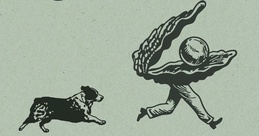Robot Revolution: Paul Grayson is Taking the Challenge to Build a Robot Car for the Defense Department
June 2, 2004
If a convoy of robot vehicles could deliver supplies to combat troops in the field, then there would be no drivers to be kidnapped and killed. Robot scout cars could provide advance intelligence. The same technology could run farm machines to plant and harvest crops. Applying intelligent systems to the cars we now drive, traffic accidents could become rare.These are some of the motives that brought Traverse City resident Paul Grayson to a U.S. Defense Department “grand challenge” contest that offers $2 million in prizes. “The ideal world is one with no war,” he says. “Second best is a world in which war is so abstract that it takes no lives and where all military technologies have peaceful applications.”
ROOTS IN ROBOTICS
Grayson moved his family to Traverse City in 1984 when he joined the Naval Reserves and enrolled in the Maritime Academy here to study engineering. Licensed to operate shipboard power plants, his duties typically included electrical generators in the 100- megawatt range, about three times the output of the TCLP plant on Bay Shore Drive. Now a technician with Grand Traverse Resort, he is responsible for their off-road vehicles and agricultural machinery.
The 54-year old Grayson served in the regular U.S. Navy from 1969 to 1975, and graduated from the Navy Engineering School in Bainbridge, Maryland. After leaving the Navy, he owned a retail store in Columbus, Indiana, selling artist’s materials and drafting supplies.
It was here in Traverse City, however, that his interest in robotics led him to write a column for PCAI, a professional journal about artificial intelligence for personal computers. “I got a letter from a reader of PCAI around October 2002, telling me about the DARPA Grand Challenge that was coming up in March 2004, and I was surprised, then interested, and then captivated by the opportunity,” Grayson explains.
UNMANNED AIRCRAFT
DARPA is the Defense Advanced Research Projects Agency, founded in 1958. In the 1960s, DARPA built the Internet. More recently, they have been responsible for unmanned aircraft (Global Hawk and Predator) for surveillance, reconnaissance and precision bombing. Those planes are actually guided by human operators far from the action using computer screens and hand controls familiar to video gamers.
The ground vehicle “grand challenge” represents a steep step up the ladder of technology.
“The old time government contractors that have been getting money for 18 years just have not produced one.” Grayson points out. “The Department of Defense decided to invite people like me -- wildcards, basically -- to come up with our own funding to provide a robot. They are hoping for free enterprise to provide a solution. The government is attempting to create now the same environment that existed in aviation in the 1930s when World War II fighter planes and bombers were possible because of the Cleveland Air Races of the 1920s and 1930s in which people like Howard Hughes created the fastest, most powerful airplanes possible, solving hundreds of engineering problems.”
DARPA held their first Grand Challenge autonomous vehicle “field test” on March 13, 2004. (DARPA officially declined to call it a “race.”) Only one robot car got more than seven miles into the 142-mile race before encountering a problem it could not solve. According to DARPA: “Vehicle 22 - Red Team - At mile 7.4, on switchbacks in a mountainous section, vehicle went off course, got caught on a berm and rubber on the front wheels caught fire, which was quickly extinguished. Vehicle was command-disabled. None of the 14 other vehicles was so successful.“
NEXT TIME AROUND
The next field test is scheduled for March 2005. Between now and then, there will be another desert race, this one sponsored by the International Robot Racing Federation. That race will be held in September outside Las Vegas. Grayson intends to be ready for it. “We at American Industrial Magic now have 60 team members on the roster. We need local hands-on people to assemble the vehicle,” he says. “Six people, working three hours a night, seven days a week can do this by the deadline. We are looking for ordinary people. You don’t have to be an expert to be on the team. You just have to be committed to moving the project forward.”
Funding for the multi-million dollar effort is coming from several sources. Chief among these is advertising in exchange for support.
“We are in the same business as the Indy cars. A racecar company is an advertising company. That is how you pay your bills,” says Grayson. He has gotten support from both national corporations, such as Hewlett-Packard, as well as Grand Traverse businesses, including Brown Lumber and the local sales office of Fitzpatrick Electric. The driver of a team racecar is the one in the cool jumpsuit sporting corporate logos. A robot car has no driver, of course, so the pit crew will be the ones decked out.
The pit crew will take the self-guided dune buggy to automobile races and community fairs where the vehicle will demonstrate its abilities. Grayson’s plans include a “whip and chair” routine similar to a lion tamer’s act. The robot car has a collision-avoidance system. If you enter the car’s sensory field, it retreats. If you back up, it moves forward. The autonomous vehicle also has an integral fire-suppression system. One plan is to test this dramatically by setting the car on fire. “I am looking for people who want to do the most interesting thing they can imagine over a summer,” Grayson says. The real tests will be the IRRF open challenge race in Las Vegas, and the DARPA field test next year.
SENSING THE ENVIRONMENT
According to the www.darpa.mil/grandchallenge website: “Challenge vehicles must autonomously traverse the challenge route without human interface or control of any kind. The vehicles must perform general route selection and navigation to follow the Challenge route. Vehicles must sense their environment to perceive terrain features, ground conditions, obstacles, and other Challenge vehicles. They must intelligently control their speed and direction so as to avoid or accommodate all of the above. And they must do these things quickly- overall speed will be the deciding factor and the time limit is designed to push vehicle speeds far beyond current technologies.”
Grayson and five of his co-workers from Grand Traverse Resort submitted three vehicles to DARPA for the previous race, held on March 13 of this year. They did not compete. “DARPA approved our plans and documents, and considered us among the top five entrants,” Grayson says. A peer review by other teams put them among the top seven. However, none of the vehicles could be completed in time. Now, he is assembling a new team to re-build the primary entry, dubbed the AV Andrea Morgan. This car is built on the chassis of a VW bug. Two other vehicles are also possible. The AV Sydney Bristow would start its life as an H-1 “Hummer.” The AV Wendy Darling would be built on a “deuce and a half” 2 ? ton military truck.
For the present, Grayson’s focus is on finding a suitable place to work. A pole barn with a concrete floor or a former service station would be two likely alternatives. However, he also has his eye on the future. “The demand for a self-guided agricultural vehicle is very real,” he says. “I know a farmer down in Niles with two.” His long term plan is to establish a sales and service company in the Grand Traverse region employing 50 people who will install 1,000 autopilots a year on farm vehicles.
Trending

Our Top Stories of 2025
Each year, we look back at the stories we’ve shared over the last 12 months and pull together the ones that got the mo… Read More >>
A Solo Rattler
Frontman of folk-rock band Michigan Rattlers Graham Young brings his solo performance to Great Lakes Center for the Arts in … Read More >>
GTB Starting the Year with Tradition
The Grand Traverse Band of Ottawa and Chippewa Indians hosts the Kchi Wiikwedong Anishinaabek Maawnjidowin Round Dance on Ja… Read More >>


